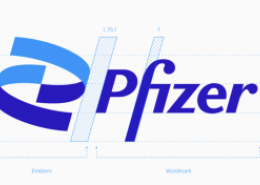Arvinas and Pfizer Announce Interim Data from Phase 1b Trial of Vepdegestrant in Combination with Palbociclib (IBRANCE®) and Plans to Expand Vepdegestrant Development Program
– Overall response rate of 42% and median progression-free survival of 11.1 months in heavily pre-treated patients (after 11 months median follow-up time and based on 48% of events) demonstrates the potential of vepdegestrant in combination with palbociclib (IBRANCE®) –
– Tolerability generally consistent with the profile of palbociclib and what has been observed in other clinical trials of vepdegestrant–
– Pending additional data and agreement with regulatory authorities, Arvinas and Pfizer plan to broaden development of vepdegestrant to include new combinations with CDK inhibitors in both the first- and second-line settings –
NEW HAVEN, Conn. and NEW YORK, December 5, 2023 – Arvinas, Inc. (Nasdaq: ARVN) and Pfizer Inc. (NYSE: PFE) today announced clinical data for vepdegestrant (ARV-471), a novel oral PROteolysis TArgeting Chimera (PROTAC®) estrogen receptor (ER) degrader, in combination with palbociclib (IBRANCE®). Interim results from the Phase 1b combination cohort demonstrate encouraging clinical activity in heavily pre-treated patients with a median of four lines of therapy across disease settings with locally advanced or metastatic ER positive/human epidermal growth factor 2 (HER2) negative (ER+/HER2-) breast cancer. These data will be presented in a spotlight presentation at the 2023 San Antonio Breast Cancer Symposium (SABCS).
“We are thrilled to see this level of clinical activity in such a heavily pre-treated patient population,” said John Houston, Ph.D., chairperson, chief executive officer, and president at Arvinas. “Vepdegestrant is the only PROTAC® ER degrader in late-stage clinical development. The results from this trial evaluating vepdegestrant in combination with palbociclib help advance our goals of benefitting patients with ER+/HER2- breast cancer. It is encouraging to see preliminary signals of activity in both wild-type and ESR1 mutant tumors, with manageable tolerability and low rates of discontinuation.”
Vepdegestrant is a PROTAC® ER degrader designed to directly harness one of the cell’s natural protein disposal processes to specifically target and degrade the estrogen receptor. Vepdegestrant is being co-developed by Arvinas and Pfizer and is currently being evaluated as a monotherapy in the second-line setting in the ongoing Phase 3 VERITAC-2 trial and in the first-line setting in combination with palbociclib in the ongoing study lead-in cohort of the Phase 3 VERITAC-3 trial.
“Our goal is to develop a novel, tolerable next-generation estrogen-targeting agent that can help patients with ER+/HER2- breast cancer address disease progression,” said Adam Schayowitz, Ph.D., vice president, development head, breast cancer, colorectal cancer and melanoma, Pfizer. “Collectively, the data presented this year at SABCS for vepdegestrant, especially in combination with palbociclib, show the potential of this investigational innovative therapeutic option. Our ongoing collaboration with Arvinas exemplifies our shared commitment to bringing new therapies to patients with ER+/HER2- breast cancer, who may feel uncertain and vulnerable in the face of recurrent advanced disease.”
Pending additional data and agreement with regulatory authorities, Arvinas and Pfizer plan to broaden development of vepdegestrant to include new combinations with cyclin-dependent kinase (CDK) inhibitors in both the first- and second-line settings. The companies plan to initiate a new second-line Phase 3 trial of vepdegestrant in combination with palbociclib and potentially other CDK4/6 inhibitors, and a new first-line Phase 3 trial of vepdegestrant plus Pfizer’s novel CDK4 inhibitor (PF-07220060).
Vepdegestrant + Palbociclib Phase 1b Study
In a spotlight presentation, interim data from the Phase 1b cohort of the first-in-human (FIH) ARV-471-mBC-101 study evaluating vepdegestrant in combination with palbociclib (NCT04072952) assessed the safety, tolerability and anti-tumor activity of the combination among 46 patients with heavily pre-treated locally advanced or metastatic ER+/HER2- breast cancer. At the time of data cutoff (June 6, 2023), patients had received a median of four prior therapies across all lines (median of three in the metastatic setting); 87% were previously treated with a cyclin-dependent kinase 4 and 6 (CDK4/6) inhibitor; 80% were previously treated with fulvestrant; and 76% were previously treated with chemotherapy, including 46% in the metastatic setting.
Patients were treated once daily with oral doses of vepdegestrant at 180 mg (n=2), the recommended Phase 3 dose (RP3D) of 200 mg (n=21), 400 mg (n=3) or 500 mg (n=20), plus 125 mg of palbociclib given orally once daily for 21 days, followed by seven days off treatment in 28-day cycles.
Vepdegestrant in combination with palbociclib demonstrated:
- A clinical benefit rate (CBR, defined as the rate of confirmed complete response, partial response, or stable disease ≥ 24 weeks) of 63% (95% CI: 47.5–76.8), or 29/46 patients; at the RP3D of 200 mg (n=21), the CBR was 67% (95% CI: 43.0 – 85.4), or 14/21 patients
- CBR in patients with mutant ESR1: 72% (95% CI: 52.8-87.3), or 21/29 patients; at the RP3D of 200 mg (n=14), the CBR was 79% (95% CI: 49.2 – 95.3), or 11/14 patients
- CBR in patients with wild-type ESR1: 53% (95% CI: 26.6-78.7), or 8/15 patients; at the RP3D of 200 mg (n=7), the CBR was 43% (95% CI: 9.9 – 81.6), or 3/7 patients
- An objective response rate (ORR) in evaluable patients with measurable disease at baseline (n=31) of 42% (95% CI: 24.5–60.9), or 13/31 patients; at the RP3D of 200 mg (n=15), the ORR was 53% (95% CI: 26.6 – 78.7)
- ORR in patients with mutant ESR1: 47% (95% CI: 23.0-72.2), or 8/17 patients
- ORR at the RP3D of 200 mg (n=10): 60% (95% CI: 26.2 – 87.8)
- ORR in patients with wild-type ESR1: 42% (95% CI: 15.2-72.3), or 5/12 patients
- ORR at the RP3D of 200 mg (n=5): 40% (95% CI: 26.6 – 78.7)
- ORR in patients with mutant ESR1: 47% (95% CI: 23.0-72.2), or 8/17 patients
- Median progression free survival (PFS) of 11.1 months (95% CI: 8.2 – NE); 22 of 46 patients across all doses had progression events by time of data cutoff
- PFS in patients with mutant ESR1: 11.0 months (95% CI: 8.2-NE), 13 of 29 patients had progression events by data cutoff
- PFS in patients with wild-type ESR1: 11.1 months (95% CI: 2.8-NE), 8 of 15 patients had progression events by data cutoff
In an assay of circulating tumor DNA (ctDNA), patients with ESR1 mutations (n=22 evaluable for ctDNA analysis after 1 cycle of treatment) demonstrated a -96.8% mean decrease (range: -75.6% to -100%) in ESR1 mutant allele fraction after 1 cycle of treatment.
The safety profile of vepdegestrant plus palbociclib was manageable with palbociclib dose reductions and/or interruptions per protocol which are consistent with those described in the prescribing label. The primary toxicity associated with the vepdegestrant plus palbociclib combination was neutropenia. Grade 4 neutropenia occurred in 8 of 21 patients (38%) treated at the RP3D of vepdegestrant (200 mg) plus palbociclib 125 mg. Grade 3/4 neutropenia occurred in 89% of all patients. There was a higher occurrence of Grade 4 neutropenia, although discontinuation rates of palbociclib and rates of infection were in line with historical palbociclib data.
No cases of febrile neutropenia were reported in any of the 46 patients treated with the combination. Three of 46 patients discontinued palbociclib due to neutropenia including one out of 21 treated with the RP3D of vepdegestrant (200 mg) plus palbociclib 125 mg.
The majority of Grade 4 neutropenia events occurred in the first cycle of treatment and occurrences of Grade 3/4 neutropenia decreased with palbociclib dose reductions as described in the prescribing label. The safety profile was otherwise consistent with the profile of palbociclib and what has been observed in other clinical trials for vepdegestrant.
An increase in palbociclib exposure (46% - 58%) was observed compared to historical pharmacokinetic (PK) data, with similar increases observed with vepdegestrant 200 mg and 500 mg QD.
“While many patients I treat with ER+/HER2- breast cancer respond well to current therapies, disease progression is still an unfortunate reality and there is a significant need for additional therapies to help us treat ER+/HER2- breast cancer that has spread to other parts of the body, or metastasized,” said Erika Hamilton, M.D., director of Breast Cancer Research at Sarah Cannon Research Institute in Nashville, Tennessee, and a lead investigator in the vepdegestrant clinical program and presenting author on the data presentation at SABCS. “Vepdegestrant represents a potential new approach to degrading ER, a pathway known to drive breast cancer progression, and I am encouraged by the early data seen in the Phase 1b cohort of this study. Importantly, patients were able to utilize standard dose reductions to manage neutropenia and remain on treatment.”
Additional Abstracts Presented at SABCS
Together, Arvinas and Pfizer will share five additional abstracts at SABCS, including a vepdegestrant monotherapy VERITAC Phase 2 dose expansion update, a pharmacokinetic/pharmacodynamic (PK/PD) model evaluating the optimal dosing of palbociclib in combination with vepdegestrant, and three additional Trial in Progress abstracts.
The VERITAC Phase 2 monotherapy dose expansion of the ARV-471-mBC-101 study analyzed the safety, efficacy, and tolerability of vepdegestrant amongst 35 heavily pre-treated patients with locally advanced or metastatic ER+/HER2- breast cancer. This update includes 12 months of additional follow-up data, and the tolerability and efficacy profile remained largely consistent with previous data disclosures.
In the PK/PD model simulation, a 100 mg dose of palbociclib in combination with vepdegestrant produced similar incidence of Grade 4 neutropenia and comparable average palbociclib exposure compared to historical reference.
Titles for the five additional abstracts are listed here.
Investor Call & Webcast Details
A conference call and webcast will be held with executives from Arvinas and Pfizer to discuss the data presented at SABCS. Details for this call will be provided in a separate press release shared on www.arvinas.com. Participants are invited to listen by going to the Events and Presentation section under the Investors page on the Arvinas website at www.arvinas.com. A replay of the webcast will be archived on the Arvinas website following the presentation.
About vepdegestrant (ARV-471)
Vepdegestrant is an investigational, orally bioavailable PROTAC protein degrader designed to specifically target and degrade the estrogen receptor (ER) for the treatment of patients with ER positive (ER+)/human epidermal growth factor receptor 2 (HER2) negative (ER+/HER2-) breast cancer.
In preclinical studies, vepdegestrant demonstrated up to 97% ER degradation in tumor cells, induced robust tumor shrinkage when dosed as a single agent in multiple ER-driven xenograft models, and showed increased anti-tumor activity when compared to a standard of care agent, fulvestrant, both as a single agent and in combination with a CDK4/6 inhibitor. In July 2021, Arvinas announced a global collaboration with Pfizer for the co-development and co-commercialization of vepdegestrant; Arvinas and Pfizer will equally share worldwide development costs, commercialization expenses, and profits. Ongoing and planned clinical trials will continue to monitor and evaluate the safety and anti-tumor activity of vepdegestrant.
About Arvinas
Arvinas is a clinical-stage biotechnology company dedicated to improving the lives of patients suffering from debilitating and life-threatening diseases through the discovery, development, and commercialization of therapies that degrade disease-causing proteins. Arvinas uses its proprietary PROTAC Discovery Engine platform to engineer proteolysis targeting chimeras, or PROTAC targeted protein degraders, that are designed to harness the body’s own natural protein disposal system to selectively and efficiently degrade and remove disease-causing proteins. In addition to its robust preclinical pipeline of PROTAC protein degraders against validated and “undruggable” targets, the company has three investigational clinical-stage programs: ARV-766 and bavdegalutamide for the treatment of men with metastatic castration-resistant prostate cancer; and vepdegestrant (ARV-471) for the treatment of patients with locally advanced or metastatic ER+/HER2- breast cancer. Arvinas, as part of its overall business strategy, selectively assesses opportunities for potential collaboration, license, marketing and royalty arrangements, and similar transactions, to advance and accelerate the development and enhance the commercial potential of its product candidates. For more information, visit www.arvinas.com.
Arvinas Forward-Looking Statements
This press release contains forward-looking statements within the meaning of The Private Securities Litigation Reform Act of 1995 that involve substantial risks and uncertainties, including statements regarding the potential advantages and therapeutic benefits of vepdegestrant (ARV-471), as well as other statements with respect to vepdegestrant, including the presentation and/or publication of data from vepdegestrant trials. All statements, other than statements of historical facts, contained in this press release are forward-looking statements. The words “believe,” “expect,” “may,” “plan,” “potential,” “will,” “continue,” and similar expressions are intended to identify forward-looking statements, although not all forward-looking statements contain these identifying words.
We may not actually achieve the plans, intentions or expectations disclosed in our forward-looking statements, and you should not place undue reliance on our forward-looking statements. Actual results or events could differ materially from the plans, intentions and expectations disclosed in the forward-looking statements we make as a result of various risks and uncertainties, including but not limited to: our and Pfizer, Inc.’s (“Pfizer”) performance of our respective obligations with respect to our collaboration with Pfizer; whether we and Pfizer will be able to successfully conduct and complete clinical development for vepdegestrant and obtain marketing approval for and commercialize vepdegestrant on our current timelines or at all; whether our cash and cash equivalent resources will be sufficient to fund our foreseeable and unforeseeable operating expenses and capital expenditure requirements; and other important factors discussed in the “Risk Factors” section of our Annual Report on Form 10-K for the year ended December 31, 2022, and subsequent other reports on file with the Securities and Exchange Commission. The forward-looking statements contained in this press release reflect our current views with respect to future events, and we assume no obligation to update any forward-looking statements except as required by applicable law. These forward-looking statements should not be relied upon as representing our views as of any date after the date of this release.
About IBRANCE® (palbociclib) 125 mg tablets and capsules
IBRANCE is an oral inhibitor of CDKs 4 and 6,1 which are key regulators of the cell cycle that trigger cellular progression.2,3 In the U.S., IBRANCE is a prescription medicine indicated for the treatment of adults with HR+, HER2- advanced or metastatic breast cancer in combination with an aromatase inhibitor as the first hormonal based therapy; or with fulvestrant in people with disease progression following hormonal therapy.
The full U.S. Prescribing Information for the IBRANCE tablets and the IBRANCE capsules can be found here and here.
IMPORTANT IBRANCE®(palbociclib) SAFETY INFORMATION FROM THE U.S. PRESCRIBING INFORMATION
Neutropenia was the most frequently reported adverse reaction in PALOMA-2 (80%) and PALOMA-3 (83%). In PALOMA-2, Grade 3 (56%) or 4 (10%) decreased neutrophil counts were reported in patients receiving IBRANCE plus letrozole. In PALOMA-3, Grade 3 (55%) or Grade 4 (11%) decreased neutrophil counts were reported in patients receiving IBRANCE plus fulvestrant. Febrile neutropenia has been reported in 1.8% of patients exposed to IBRANCE across PALOMA-2 and PALOMA-3. One death due to neutropenic sepsis was observed in PALOMA-3. Inform patients to promptly report any fever.
Monitor complete blood count prior to starting IBRANCE, at the beginning of each cycle, on Day 15 of first 2 cycles and as clinically indicated. Dose interruption, dose reduction, or delay in starting treatment cycles is recommended for patients who develop Grade 3 or 4 neutropenia.
Severe, life-threatening, or fatal interstitial lung disease (ILD) and/or pneumonitis can occur in patients treated with CDK4/6 inhibitors, including IBRANCE when taken in combination with endocrine therapy. Across clinical trials (PALOMA-1, PALOMA-2, PALOMA-3), 1.0% of IBRANCE-treated patients had ILD/pneumonitis of any grade, 0.1% had Grade 3 or 4, and no fatal cases were reported. Additional cases of ILD/pneumonitis have been observed in the post-marketing setting, with fatalities reported.
Monitor patients for pulmonary symptoms indicative of ILD/pneumonitis (e.g. hypoxia, cough, dyspnea). In patients who have new or worsening respiratory symptoms and are suspected to have developed pneumonitis, interrupt IBRANCE immediately and evaluate the patient. Permanently discontinue IBRANCE in patients with severe ILD or pneumonitis.
Based on the mechanism of action, IBRANCE can cause fetal harm. Advise females of reproductive potential to use effective contraception during IBRANCE treatment and for at least 3 weeks after the last dose. IBRANCE may impair fertility in males and has the potential to cause genotoxicity. Advise male patients to consider sperm preservation before taking IBRANCE. Advise male patients with female partners of reproductive potential to use effective contraception during IBRANCE treatment and for 3 months after the last dose. Advise females to inform their healthcare provider of a known or suspected pregnancy. Advise women not to breastfeed during IBRANCE treatment and for 3 weeks after the last dose because of the potential for serious adverse reactions in nursing infants.
The most common adverse reactions(≥10%) of any grade reported in PALOMA-2 for IBRANCE plus letrozole vs placebo plus letrozole were neutropenia (80% vs 6%), infections (60% vs 42%), leukopenia (39% vs 2%), fatigue (37% vs 28%), nausea (35% vs 26%), alopecia (33% vs 16%), stomatitis (30% vs 14%), diarrhea (26% vs 19%), anemia (24% vs 9%), rash (18% vs 12%), asthenia (17% vs 12%), thrombocytopenia (16% vs 1%), vomiting (16% vs 17%), decreased appetite (15% vs 9%), dry skin (12% vs 6%), pyrexia (12% vs 9%), and dysgeusia (10% vs 5%).
The most frequently reported Grade ≥3 adverse reactions (≥5%) in PALOMA-2 for IBRANCE plus letrozole vs placebo plus letrozole were neutropenia (66% vs 2%), leukopenia (25% vs 0%), infections (7% vs 3%), and anemia (5% vs 2%).
Lab abnormalities of any grade occurring in PALOMA-2 for IBRANCE plus letrozole vs placebo plus letrozole were decreased WBC (97% vs 25%), decreased neutrophils (95% vs 20%), anemia (78% vs 42%), decreased platelets (63% vs 14%), increased aspartate aminotransferase (52% vs 34%), and increased alanine aminotransferase (43% vs 30%).
The most common adverse reactions (≥10%) of any grade reported in PALOMA-3 for IBRANCE plus fulvestrant vs placebo plus fulvestrant were neutropenia (83% vs 4%), leukopenia (53% vs 5%), infections (47% vs 31%), fatigue (41% vs 29%), nausea (34% vs 28%), anemia (30% vs 13%), stomatitis (28% vs 13%), diarrhea (24% vs 19%), thrombocytopenia (23% vs 0%), vomiting (19% vs 15%), alopecia (18% vs 6%), rash (17% vs 6%), decreased appetite (16% vs 8%), and pyrexia (13% vs 5%).
The most frequently reported Grade ≥3 adverse reactions (≥5%) in PALOMA-3 for IBRANCE plus fulvestrant vs placebo plus fulvestrant were neutropenia (66% vs 1%) and leukopenia (31% vs 2%).
Lab abnormalities of any grade occurring in PALOMA-3 for IBRANCE plus fulvestrant vs placebo plus fulvestrant were decreased WBC (99% vs 26%), decreased neutrophils (96% vs 14%), anemia (78% vs 40%), decreased platelets (62% vs 10%), increased aspartate aminotransferase (43% vs 48%), and increased alanine aminotransferase (36% vs 34%).
Avoid concurrent use of strong CYP3A inhibitors. If patients must be administered a strong CYP3A inhibitor, reduce the IBRANCE dose to 75 mg. If the strong inhibitor is discontinued, increase the IBRANCE dose (after 3-5 half-lives of the inhibitor) to the dose used prior to the initiation of the strong CYP3A inhibitor. Grapefruit or grapefruit juice may increase plasma concentrations of IBRANCE and should be avoided. Avoid concomitant use of strong CYP3A inducers. The dose of sensitive CYP3A substrates with a narrow therapeutic index may need to be reduced as IBRANCE may increase their exposure.
For patients with severe hepatic impairment (Child-Pugh class C), the recommended dose of IBRANCE is 75 mg. The pharmacokinetics of IBRANCE have not been studied in patients requiring hemodialysis.
About Pfizer Oncology
At Pfizer Oncology, we are committed to advancing medicines wherever we believe we can make a meaningful difference in the lives of people living with cancer. Today, we have an industry-leading portfolio of 24 approved innovative cancer medicines and biosimilars across more than 30 indications, including breast, genitourinary, colorectal, blood and lung cancers, as well as melanoma.
About Pfizer: Breakthroughs That Change Patients’ Lives
At Pfizer, we apply science and our global resources to bring therapies to people that extend and significantly improve their lives. We strive to set the standard for quality, safety and value in the discovery, development and manufacture of health care products, including innovative medicines and vaccines. Every day, Pfizer colleagues work across developed and emerging markets to advance wellness, prevention, treatments and cures that challenge the most feared diseases of our time. Consistent with our responsibility as one of the world's premier innovative biopharmaceutical companies, we collaborate with health care providers, governments and local communities to support and expand access to reliable, affordable health care around the world. For more than 170 years, we have worked to make a difference for all who rely on us. We routinely post information that may be important to investors on our website at www.Pfizer.com. In addition, to learn more, please visit us on www.Pfizer.com and follow us on Twitter at @Pfizer and @Pfizer News, LinkedIn, YouTube and like us on Facebook at Facebook.com/Pfizer.
Pfizer Disclosure Notice:
The information contained in this release is as of December 5, 2023. Pfizer assumes no obligation to update forward-looking statements contained in this release as the result of new information or future events or developments.
This release contains forward-looking information about vepdegestrant (ARV-471), IBRANCE® (palbociclib) and a global collaboration between Pfizer and Arvinas to develop and commercialize vepdegestrant, including their potential benefits and plans for clinical trials, that involves substantial risks and uncertainties that could cause actual results to differ materially from those expressed or implied by such statements. Risks and uncertainties include, among other things, the uncertainties inherent in research and development, including the ability to meet anticipated clinical endpoints, commencement and/or completion dates for clinical trials, regulatory submission dates, regulatory approval dates and/or launch dates, as well as the possibility of unfavorable new clinical data and further analyses of existing clinical data; risks associated with interim data; the risk that clinical trial data are subject to differing interpretations and assessments by regulatory authorities; whether regulatory authorities will be satisfied with the design of and results from the clinical studies; whether and when any applications may be filed for vepdegestrant, IBRANCE or any potential combinations for any potential indications in any jurisdictions; whether and when regulatory authorities may approve any potential applications that may be filed for vepdegestrant, IBRANCE or any potential combinations in any jurisdictions, which will depend on myriad factors, including making a determination as to whether the product’s benefits outweigh its known risks and determination of the product’s efficacy and, if approved, whether vepdegestrant, IBRANCE or any potential combinations will be commercially successful; decisions by regulatory authorities impacting labeling, manufacturing processes, safety and/or other matters that could affect the availability or commercial potential of vepdegestrant, IBRANCE or any potential combinations; whether the collaboration between Pfizer and Arvinas will be successful; uncertainties regarding the impact of COVID-19 on Pfizer’s business, operations and financial results; and competitive developments.
A further description of risks and uncertainties can be found in Pfizer’s Annual Report on Form 10-K for the fiscal year ended December 31, 2022, and in its subsequent reports on Form 10-Q, including in the sections thereof captioned “Risk Factors” and “Forward-Looking Information and Factors That May Affect Future Results”, as well as in its subsequent reports on Form 8-K, all of which are filed with the U.S. Securities and Exchange Commission and available at www.sec.gov and www.pfizer.com.
Arvinas Contacts
Investor Contact:
Jeff Boyle, Arvinas Investor Relations
347-247-5089
[email protected]
Media Contact:
Kirsten Owens, Arvinas Communications
203-584-0307
[email protected]
Pfizer Contacts
Investor Contact:
+1 (212) 733-4848
[email protected]
Media Contact:
+1 (212) 733-1226
[email protected]
1 IBRANCE® (palbociclib) Prescribing Information. New York. NY: Pfizer Inc: 2022.
2 Weinberg, RA. pRb and Control of the Cell Cycle Clock. In: Weinberg RA, ed. The Biology of Cancer. 2nd ed. New York, NY: Garland Science; 2014:275-329.
3 Sotillo E, Grana X. Escape from Cellular Quiescence. In: Enders GH, ed. Cell Cycle Deregulation in Cancer. New York, NY: Humana Press; 2010:3-22.







